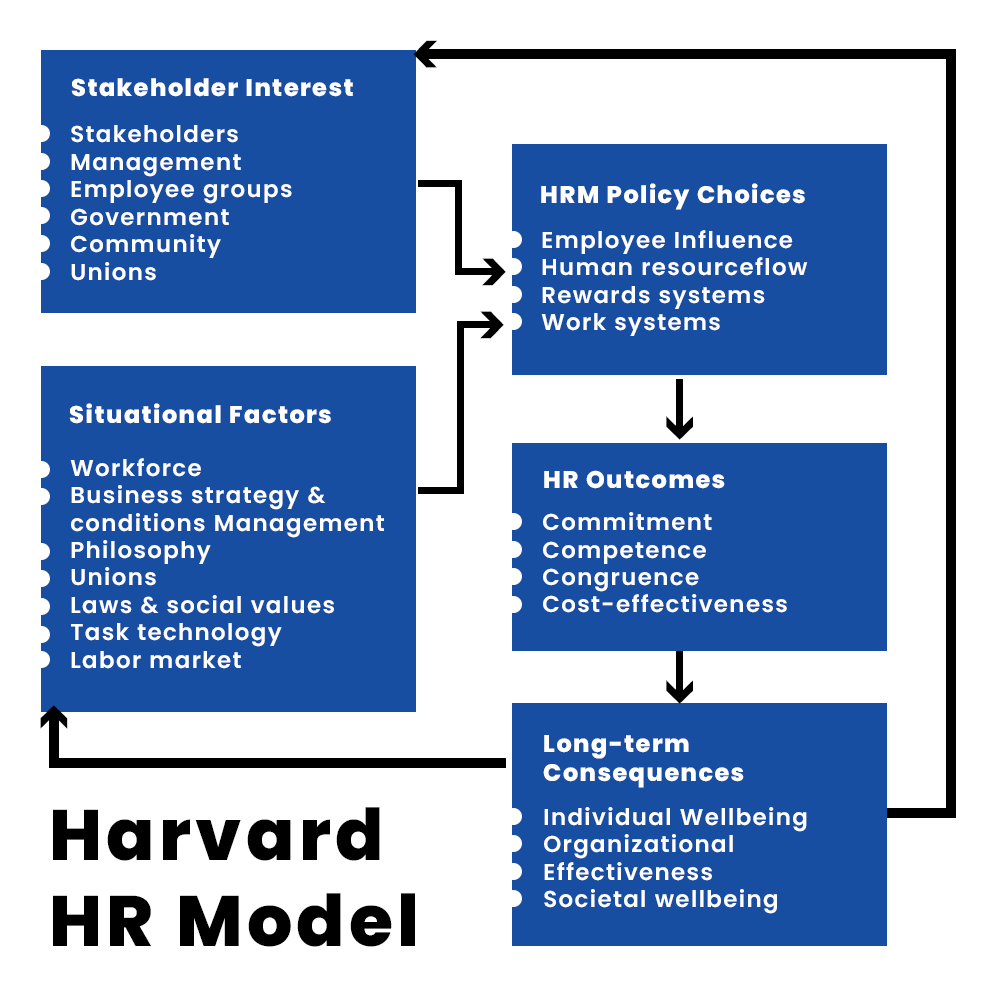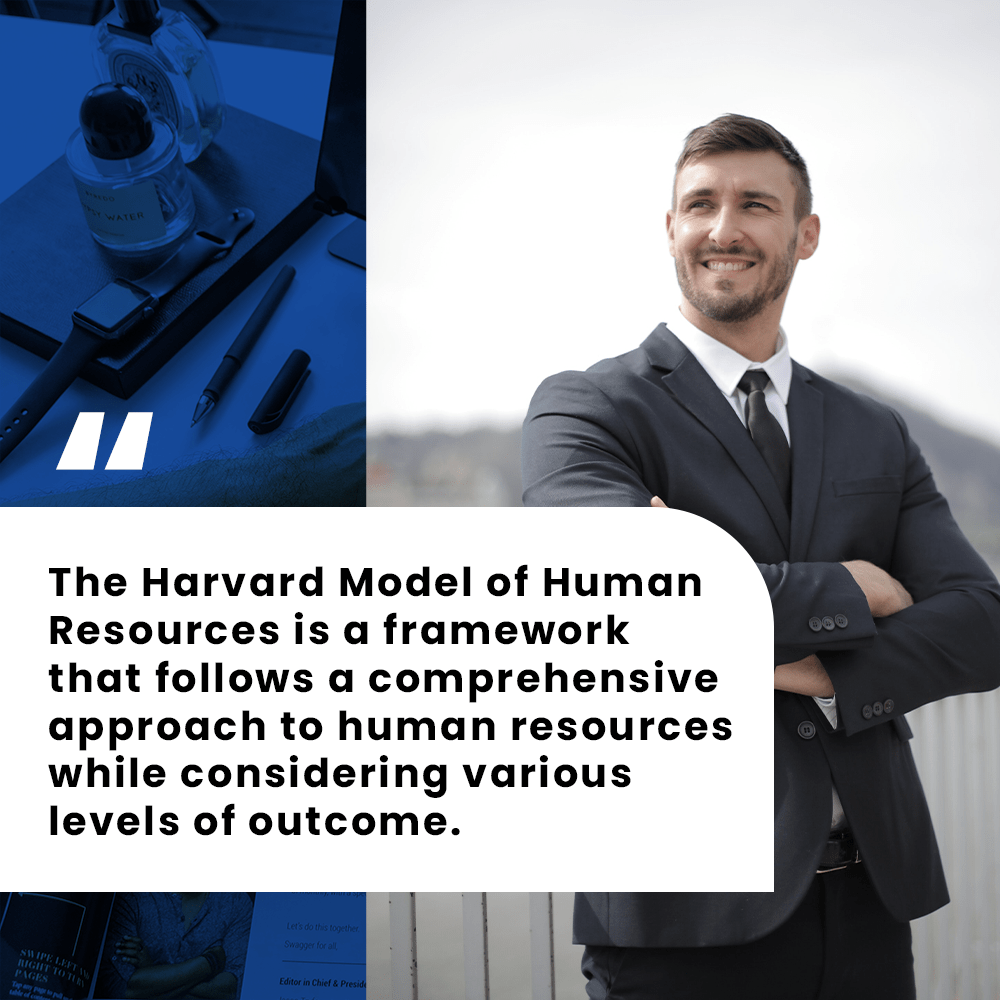Today we’re going to talk about something that is near and dear to every HR Training Course (or at least, to those of us who understand its importance) – Human Resource Management! We are talking about the Harvard Human Resource Management Model – a framework that has been around for years but still as relevant today as it was back then.
In this blog we will understand what exactly is the Harvard Model.

What exactly is the Harvard Human Resource Model?
Well, in simple terms, it’s a framework that examines how HR policies and practices can impact a company’s stakeholders and the wider business outcomes.
In other words, it’s about how HR can make or break a company. The popularity of this model can be attributed to the fact that it is people centric rather than being outcome centric.
Harvard Human Resource Framework
The Harvard Model consists of four key components: stakeholder interests, situational factors, HR policies, and HR outcomes.
Stakeholder Interests
First, we have stakeholder interests. These are the people or groups who are affected by the decisions made by a company. In the context of HR, that includes employees, managers, shareholders, and customers.
Situational Factors
Next up, we have situational factors. These are the external and internal factors that can influence HR policies and practices. For example, the state of the economy, the competitive landscape, and the company culture are all situational factors that can impact HR.
HR Policies
Once we have taken into account the stakeholder interests and situational factors, it’s time to look at HR policies. These are the actual practices and procedures that a company has in place for managing its employees. This can include things like recruitment and selection, training and development, and performance management.
Outcomes
Finally, we have HR outcomes. These are the results that a company experiences as a result of its HR policies and practices. This can include things like employee satisfaction, turnover, and productivity.
Analysis
So, what does all of this mean in the big picture? Well, the Harvard Model is all about understanding the long-term consequences of HR policies and practices.
By considering the interests of all stakeholders and taking into account situational factors, HR can make decisions that have a positive impact on the company and its employees.

For example, let’s say that a company is looking to cut costs. One way they might do this is by reducing the number of employees they have. However, this could lead to lower morale and increased turnover among the remaining employees. This, in turn, could impact the company’s productivity and bottom line.
On the other hand, if the company invests in employee training and development, they might be able to improve employee skills and motivation, leading to increased productivity and a more positive workplace culture.
Final Words
The Harvard Model is all about making informed decisions that balance the interests of all stakeholders and result in positive outcomes for everyone involved.
It is a powerful tool for HR professionals, offering a framework for making informed decisions that take into account the interests of all stakeholders and result in positive outcomes. On a lighter note, next time you hear someone say that HR is just a bunch of paperwork and benefits administration, you can tell them about the Harvard Model and prove them wrong.
(Reference: Managing Human Assets by Michael Beer, Richard E. Walton and Bert A. Spector.)





Leave a Reply